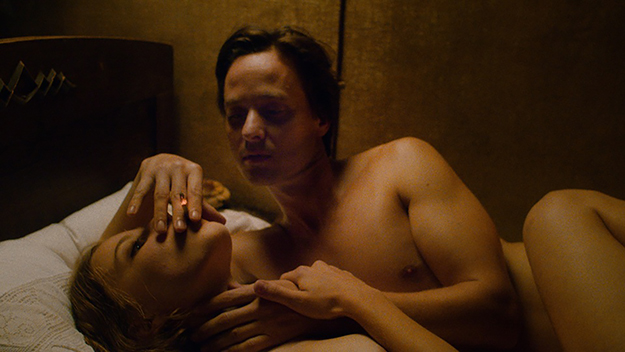Review: Fabian: Going to the Dogs
This article appeared in the February 17, 2022 edition of The Film Comment Letter, our free weekly newsletter featuring original film criticism and writing. Sign up for the Letter here.

Fabian: Going to the Dogs (Dominik Graf, 2021)
As Germany’s foremost purveyor of genre films, Dominik Graf represents an alternate vision of modern German cinema—one distinct from the austere experimentation of the Berlin School or the political provocations of the New German Cinema. He has directed more than 70 films over a nearly 50-year career, working mostly in television. Across stand-alone works such as the TV movie Friends of Friends (2002) and the 10-part miniseries In the Face of Crime (2010), or feature-length contributions to long-running crime shows like Tatort and its East German counterpart Polizeiruf 110, Graf has developed a singular style in which ever-shifting character relationships within a recognizable genre framework tease out Germany’s social, economic, and political conditions. Quasi–love triangles that tessellate around a single protagonist, voiceovers that hover about and narrate character actions, brief flashes of memories and faces that interrupt the flow of the scene—such motifs and devices recur throughout his work as termitic gestures that unify a vast, multifaceted oeuvre.
Owing partly to financing challenges and partly to his own stated preference for television, which offers him the infrastructure to explore genre conventions, Graf frequently goes years without making a theatrical film. Fabian: Going to the Dogs, an adaptation of a 1931 novel by Erich Kästner, is his first major narrative feature since the biographical period drama Beloved Sisters (2014), about playwright Friedrich Schiller’s complicated relationships with his wife and her sister. Like that film, Fabian is a nearly three-hour-long historical piece that revolves around a trio: aspiring writer Jakob Fabian (Tom Schilling), one of many youths struggling to find employment in 1931 Berlin; his beguiling lover Cornelia Battenberg (Saskia Rosendahl), a lawyer with dreams of becoming an actress; and Fabian’s close friend Stephan Labude (Albrecht Schuch), a doctoral candidate active in agitations against the rising tide of Nazism. Fabian’s relationships with these two companions (who share only a single scene) form the narrative’s twin axes. The film’s focus on each storyline waxes and wanes, as Fabian, rudderless after losing his job writing cigarette advertisements, is caught between Cornelia’s desperate ambition, which he struggles to share, and Stephan’s descent into hedonism in the face of police crackdowns and university corruption. In the harsh light of these two troubled relationships, Fabian’s peculiar, stubborn creed of principled resilience comes into relief.
In typical Graf fashion, the film resonates as both a fully fleshed-out melodrama and a grand portrait of the times. As Fabian stumbles through rowdy cabarets and desultory brothels, mingles with an anxious intelligentsia, and navigates streets increasingly crowded with uniformed soldiers, Graf sketches a portrait of a Weimar Germany still reeling from World War I and slowly descending into a moral decay already being seized upon by the forces of fascism. This is Graf’s strength: through the pleasures and tropes of his chosen genre—here, the interwar historical drama, with its twists of fate and scenes of bacchanalia—he draws out feverish currents of economic desperation and political turmoil. His handheld, rapid-cutting style is augmented by the extensive use of archival footage of 1931 Berlin that expands the film’s evocation of the city beyond the orbits of its protagonists, while Graf’s wry insertions of supporting characters, like a sex-obsessed con artist (Meret Becker) who appears unexpectedly at crucial junctures along Fabian’s journey, open up the otherwise cloistered world of the film. The opening shot, a long take through a contemporary U-Bahn station that emerges into the period-dressed city, inverts the closing shot of Beloved Sisters, which introduces 21st-century tourists into 18th-century environs. These ruptures establish the utterly contemporary insight of Graf’s historical visions, and get to the core of his still underexplored brilliance.
Ryan Swen is a freelance film critic and member of the Los Angeles Film Critics Association.







